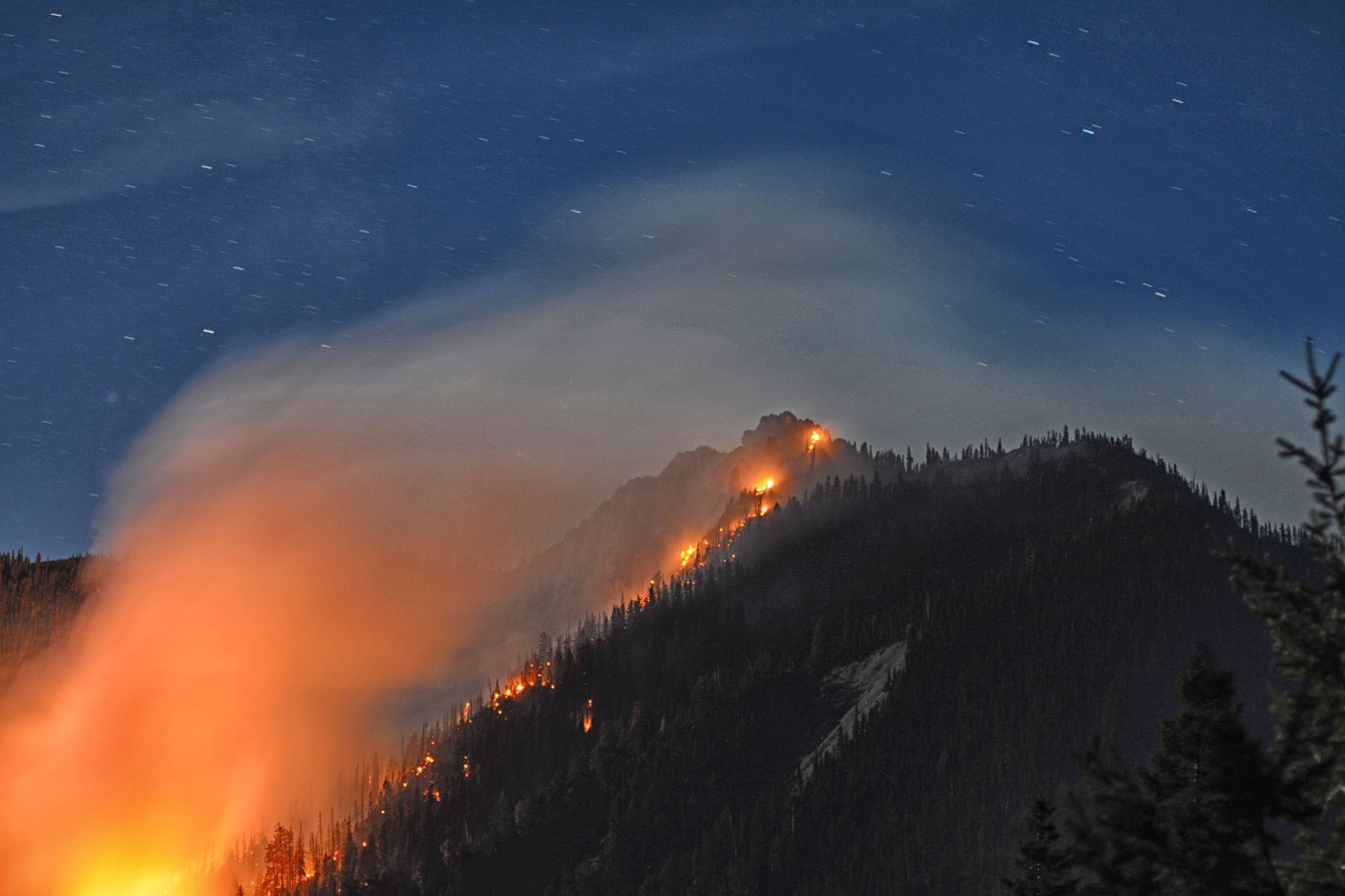It was late summer of 2015. The snow had melted by February. There was a fire burning in the Queets Rainforest. It was the driest year on record and was my first glimpse at the extremes of climate change.
I had already racked up more miles in the Olympics than I had in the previous three years combined, and decided to take a trip up to the often-overlooked Black and White Lakes in Olympic National Park. It would be another glorious day in the wilderness of my backyard park and while expectations were high, what I encountered is still an event on Public Lands that I look back on fondly.
Black and White Lakes, which I have written about before, sit at 4,500 feet above sea level, and 3,800 feet above the Staircase Ranger Station trailhead in the southeast corner of Olympic. To get here, hikers need to follow the trail to Flapjack Lakes, before following the signs to Black and White Lakes. The trail passes over creeks, climbs through forests and leads to sweeping views and stunning sights in pure wilderness. While gorgeous, the trail is also roughly 20 miles round trip, so the average hiker to Olympic won’t visit this region, as there are much more scenic and well known regions in the park to explore. For me, this is why I wanted to explore Black and White Lakes.
According to my research, Black and White Lakes was named thanks to alcohol, a knife and a tree. The name comes from a brand of whiskey drank by early elk hunters in the region, and was beloved so much by one man, that he wandered off to the lake and carved the name of the whiskey into one of the high alpine trees. This was before the park was a park and when behavior like this was not frowned upon by society. The name, despite the bland backstory, remained and a mine on Mount Gladys, which was operational from 1907 until 1940, was also named after this lake. With the potential to find an old mine shaft and a (small) potential to see the carved tree, I loaded up a small pack and headed up to Black and White Lakes.
The first few miles of the hike were nothing new. I had hiked to Flapjack Lakes a dozen times and always enjoyed myself. On this day, I recall being warm, wondering if I had brought enough water with me to sustain my hydration level in the heat. Thankfully, the shade kept me cool and I powered up the trail toward the junction. On this day, I saw no one else on the trail, typical for this corner of Olympic. I hiked on, reaching the junction and as I gained the last bit of elevation, I noticed something new. Growing from the ground was a plant I hadn’t seen in this region of Olympic before, dotting the landscape as far as I could see.

I had never seen a beargrass bloom above the Skokomish River before, but here I was, hiking a narrow trail between the pretty plants. My shorts became covered in the flowers, turning from khaki to white with each step. The more open the landscape became, the more beargrass I saw, until finally, I was at the lakes. Around the lakes, the beargrass bloom vanished, and the flowering eye-candy was replaced with the stunning views of the twin lakes and the Skokomish River Valley below. I traipsed around the lakes, looking for the tree with the name carved in it, but only half-heartedly. My mind was still on the beargrass.
Beargrass is rare on the Olympics, as the map in this link shows. According to the research in the previous link, “Beargrass cover in previously established plots on the southeastern Olympic Peninsula declined over the past 17 years, perhaps due to harvesting for the floral industry and an increase in canopy cover due to the absence of natural and anthropogenic burning.”
Beargrass blooms are also unpredictable. While some studies have shown that they occur every 5-7 years, other areas around the country have a bloom every year or two. I knew I was lucky to be out in the wilderness, experiencing the bloom and I wasn’t going to ignore it. I walked off trail for a good hour, searching for more sections of the blooming beauty, snapping a few pictures along the way to document my day. Looking back now, a handful of years removed, I should have taken more pictures, but on that day I was too in the moment to care. The day quickly became one of my favorite days of an already incredible year, and is still one of my fondest memories of the Olympics.


Had it not been for the beargrass bloom, I honestly don’t know if I would have fallen in love with Black and White Lakes as much as I did. The lakes were gorgeous, the views were stunning and the experience was great, but that beargrass added something. Beargrass adds a uniqueness to any hike that is hard to replicate. It brings a level of scenery that is rare and beautiful, and makes that day a time that I may never be able to reproduce.
Thankfully, I was there. I hiked with the beargrass sticking to my clothes as I walked down the trail back to the river valley below. I saw the beargrass in person and now, when I think of Black and White Lakes, I will always remember the awesomeness.
This post was written in one hour for my #NatureWritingChallenge, where this week’s topic was “A memorable or favorite plant, large or small, found in our public lands?”
Want to join in on the fun? Read more about this challenge here.
SEE MORE OF MY FAVORITE OLYMPIC NATIONAL PARK TRAILS
Discover a Hike a Week through our Olympic National Park Area Guidebook




